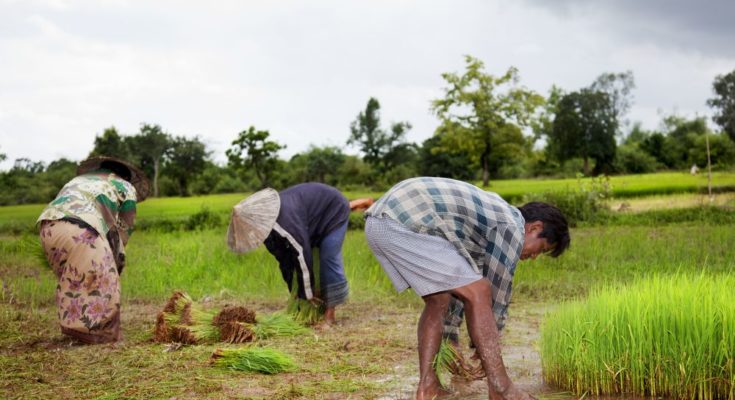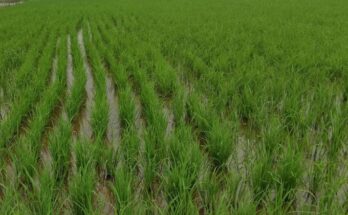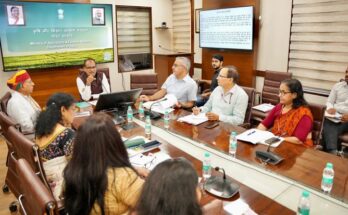Economic Survey 2019 tabled in the Parliament today by Union Minister of Finance, Nirmala Sitharaman, suggests to address the issue of burgeoning food subsidy bill for sustainable food security operations. It also suggests greater use of technology in food management and computerisation of targeted public distribution system (TPDS). The Economic Survey has given sector-wise emphasis on agriculture sector. Here’s how the Survey has catered to agriculture sector.
1.Organic Farming
The Economic Survey suggests use of optimal dose based on soil health status, promotion of neem coated urea, promotion of micro nutrients, promotion of organic fertilisers and promotion of water soluble fertilisers. Organic and natural farming techniques including Zero Budget Natural Farming (ZBNF) can improve both water use efficiency and soil fertility. The main aim of ZBNF is to eliminate chemical pesticides and promote good agronomic practices that are eco-friendly and less water consuming.
2. ICT in Agriculture
Over the years, several new challenges have emerged before the sector. With fragmentation of agricultural land holdings and depletion of water resources, the adoption of a resource efficient ICT based climate smart agriculture can enhance its productivity and sustainability. With decline in size of landholdings in agriculture, India has to focus on resource efficiency especially in smallholder farming to attain sustainability. The Economic Survey proposes that a combination of resource efficient method, dynamic cropping patterns, climate change responsive farming and intensive use of ICT should form the backbone of farming in India. For a safe and food secured future, agriculture sector has to undergo tremendous transformation from the philosophy of ‘green revolution’ led productivity to ‘green method’ led sustainability.
3. Agriculture Growth
The Economic Survey states that the gross value added in agriculture has improved from a negative 0.2 percent in 2014-15 to 6.3 percent in 2016-17 and then declined to 2.9 percent in 2018-19. While the crops, livestock and forestry sectors showed fluctuating growth rate over the period from 2014-15 to 2017-18, the fisheries sector has shown rapid growth from 4.9 percent in 2012-13 to 11.9 percent in 2017-18. The average annual growth rate in agriculture and allied sector has remained at around 2.88 percent during 2014-15 to 2018-19. However, the volatility of output growth has declined significantly over the past 60 years. The share of agriculture, forestry and fishing sector in the Gross Value Added has seen a steady decline over the years from 15.4 percent in 2015-16 to 14.4 percent in 2018-19. The decline was mainly due to decline in share of crops in GVA from 9.2 percent in 2015-16 to 8.7 percent in 2017-18.
The Gross Capital Formation (GCF) in agriculture and allied sector as a percentage of GVA saw rise to 17.7 percent in 2013-14 but declined thereafter to 15.2 percent in 2017-18. The GCF in absolute terms increased from 2,51,904 crore in 2012-13 to 2,73,555 crore in 2017-18 at 2011-12 prices. While the share of public investment registered an increase from 2014-15 and maintained an upward trend till 2016-17, the share of private investment in GCF shows a decline during this period.
4. Agriculture landholding
Talking about the pattern of agriculture landholding in India, as per Phase I result of Agriculture census 2015-16, the Economic Survey states that the number of operational holdings has increased to 14.6 crore in 2015-16 from 13.8 crore in 2010-11, thereby registering an increase of 5.1 percent. The share of marginal holdings — less than a hectare — increased from 62.9 percent in 2000-01 to 68.5 percent in 2015-16. While small holdings — one hectare to two hectare — decreased from 18.9 percent to 17.7 percent during the same period. Large holdings, above 4 hectare, decreased from 6.5 percent to 4.3 percent.
5. Women in Agriculture
Women play a significant and crucial role in agriculture including crop production, livestock production, horticulture, post harvest operations, agro/social forestry, fisheries among other related sectors. The share of operational holdings cultivated by women has increased from 11.7 percent in 2005-06 to 13.9 percent in 2015-16. The marginal and small holdings operated by women farmers together constitute 27.9 percent of total operational holdings cultivated by women.
6. Irrigation
Highlighting the importance of bringing resource efficiency in smallholder agriculture, the Economic Survey enumerates several important factors and also lays down the main policy changes required. These include increasing Irrigation Water Productivity (IWP) by adopting improved methods of irrigation and irrigation technologies, increasing sustainability through organic and natural farming, economising the use of fertilisers and pesticides, improving infrastructure and access to markets and adopting appropriate technology for smallholder farm.
Economic Survey: Priority should be given on irrigation water productivity
7. Farm Credit
The access to timely credit or finance is a critical determinant of profitability of agriculture. Lack of access to credit facilities has severe impact on agricultural productivity. The regional distribution of agriculture credit in India is highly skewed. When compared to western and southern states, the hilly, north-eastern and eastern states are at a disadvantage. The Economic Survey suggests that the provision of agriculture credit should take care of the needs of small and marginal farmers who constitute a majority in these regions.
8. Allied Sectors
Talking about the allied sectors which includes animal husbandry, dairying, poultry and fisheries, the Economic Survey emphasises that to transform the rural economy greater emphasis should be given to the allied sectors with the major focus on dairy, poultry, fisheries and rearing of small ruminants. The performance of allied sectors in terms of growth and employment has been more robust and sustainable as compared to the crop sector. Fisheries is a fast growing sector that employs more than 14.5 million people. While enhancing income through livestock development and fishery sector, it is significant that this must be undertaken without comprising the needs of the future generation by overexploiting and depleting marine resources.
9. Food Security
Food security exists, as per the Food and Agriculture Organization of the United Nations (FAO), when all people at all times have physical and economic access to sufficient, safe and nutritious food that meets the dietary needs and food preferences to ensure an active and healthy life style. India’s food security challenges lie in the areas of low GDP per capita, sufficiency of supply, public expenditure on R&D and protein quality. While India ranks number one in nutritional standards, there is a need to further improve management of food supply. The Central government takes several steps to prudently manage foodgrain stock while ensuring adequate availability of foodgrain for the entire nation.




